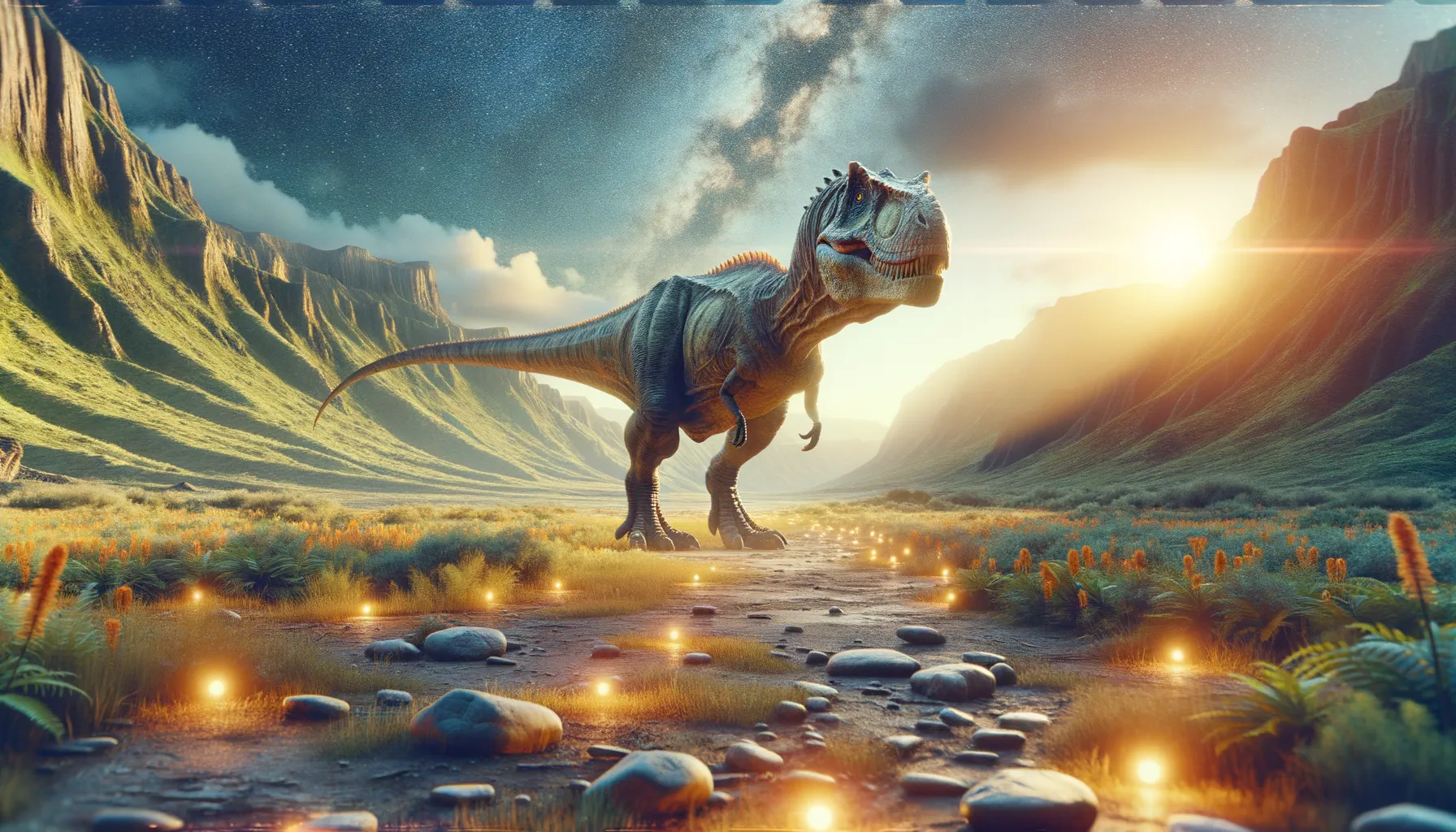
Orinosaurus
Echoes of the ancient world come alive!
Period
Cretaceous
Length
Measured around 10 meters in length.
Height
Stood about 3 meters tall.
Weight
Weighed approximately 1,500 kilograms.
This dinosaur is known for its unique features and moderate size, making it a fascinating subject of study. Its discovery helped shed light on the diversity of creatures in its era. With sturdy limbs and a characteristic body structure, it gives insights into the adaptability and evolution of dinosaurs. Its fossils provide crucial data that contribute to our understanding of prehistoric ecosystems.
Diet
It primarily fed on a variety of plants, utilizing its strong jaws to chew tough vegetation. Its diet helped maintain its large size and strength, necessary for survival in its environment.
Hunting
Though primarily herbivorous, it occasionally foraged for small insects or animals. It used its keen senses to detect food sources, engaging in short bursts of activity when necessary.
Environmental challenges
It faced a dynamic environment with fluctuating climates and vegetation. Seasonal changes dictated its migratory patterns, pushing it to seek new feeding grounds. These challenges influenced its behavioral adaptations over centuries.
Speed
Capable of moderate speeds when sprinting.
Lifespan
Estimated to live around 20-30 years.
First discovery
Uncovered during the early 2000s in South America.
Fun Facts
- Orinosaurus was a herbivorous dinosaur that roamed the Earth approximately 150 million years ago.
- Its name means 'Mountain Lizard', hinting that it might have lived in hilly or mountainous areas!
- Orinosaurus had a unique frill on its back, which possibly served as a display for attracting mates or intimidating rivals.
- Although quite large, it was likely a gentle giant, munching primarily on leaves and other plant material.
- Some scientists believe Orinosaurus may have traveled in herds for protection against predators.
- Fossils of Orinosaurus have been discovered in present-day North America.
- It shared its habitat with other well-known dinosaurs such as Allosaurus.
Growth and Development
Young orinosaurus grew rapidly during the first few years to escape predators. Its development stages were marked by significant changes in physical attributes, preparing it for adult life. Researchers believe social learning played a role in its development.
Habitat
This dinosaur thrived in lush, forested areas with abundant food and water. It preferred regions with a warm climate, enhancing its chances for survival. Its range included riverbanks, where it often found hydrated soil and varied vegetation.
Interaction with other species
Orinosaurus coexisted with various dinosaurs, manifesting competitive behaviors. It occasionally formed alliances with similar herbivores for mutual protection. These interactions played a role in shaping its social dynamics.
Natural lifespan
Its life expectancy was influenced by predation and environmental factors.
Reproduction
Reproduction involved egg-laying, with females creating nests in secluded areas. Parental care was likely minimal, though nesting sites suggest a degree of protection for eggs. Juveniles were largely independent shortly after birth.
Social behaviour
Generally traveled in small groups for better protection against predators. Displayed occasional solitary behavior when resources were scarce. Communication within groups might have involved vocalizations or physical cues.
Fossil locations
Significant fossils have been excavated in various parts of South America. These sites provide vital clues to dinosaur biodiversity. The geology of these areas offers insights into ancient habitats and climate conditions.
